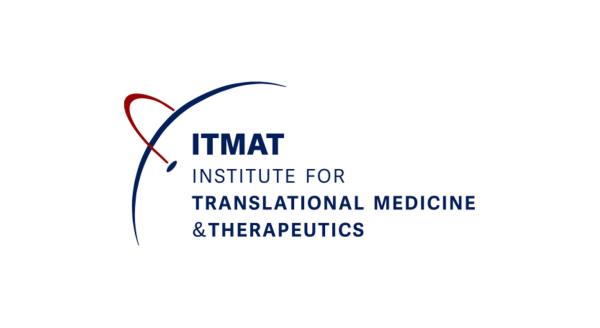To learn more about the natural history of the porphyrias, researchers are conducting a “Longitudinal Study of the Porphyrias.” Led by the Porphyrias Consortium, the team is gathering data from a large group of patients with different types of porphyria to help develop new forms of treatment.
Here, lead investigator Robert J. Desnick, PhD, MD, shares more about the study.
What are we learning about the porphyrias from this study?
Dr. Desnick: The porphyrias are the inborn errors of heme biosynthesis, as each of the eight enzymatic steps has an associated porphyria due to mutations that result in markedly decreased or increased enzymatic activity. The Longitudinal Study of the Porphyrias (LS) has documented the natural history of each of the eight major porphyrias and their variants. To date, almost 1,200 patients have been enrolled in the LS with over 400 patients each in the more common disorders, the three major autosomal dominant acute hepatic porphyrias and the autosomal recessive, and less common X-linked, erythropoietic protoporphyrias. Each patient’s specific genetic lesion and biochemical level of the pathogenic porphyrin precursor or porphyrin is documented, in part primarily accounting for the range of severity for each porphyria. Thus, this database provides the major clinical features and rarer variations for each of the eight major porphyrias. These data have allowed us to publish large American series of well-studied porphyria patients using a standardized clinical, biochemical, and genetic evaluation as well as patient-related information concerning the effect of the disease on their normal functions and issues of daily living.
What makes this study unique?
Dr. Desnick: Although the past literature primarily describes single cases, family studies, or small cohorts of patients from around the world, our LS is the first systematic clinical, biochemical, and genetic database describing the natural history and variation of American patients with each of the eight major porphyrias and their variants. Moreover, this study provides the frequency and variations of the clinical features for each porphyria. For example, in patients with erythropoietic protoporphyria, the study was the first to document their sensitivity to direct sunlight (i.e., when they feel the first symptom), which ranged from a few minutes to several hours, and was associated with patients’ mutation types.
How will this study contribute to clinical trial readiness?
Dr. Desnick: For clinical trials of new treatments for acute hepatic or erythropoietic porphryias, the LS has and will continue to identify patients who meet given trials inclusion and exclusion criteria. During the last 15 years of the Porphyrias Consortium, we have carried out six successful clinical trials designed to treat acute hepatic porphyrias, erythropoietic protoporphyrias, or porphyria cutanea tarda. Appropriate patients were recruited primarily from our LS and new patients who were identified by our advocacy group were enrolled in the LS. In addition, our well-documented patient database permitted us to participate in PC-supported and industry-sponsored therapeutic trials, including an RNA inhibition trial for the acute hepatic porphyrias and several trials of new treatments for the erythropoietic protoporphyrias.
In addition, our database has identified patients who participated in focus groups to characterize their quality-of-life issues. These formal groups provided important patient experience information to develop patient-reported outcome measures used as primary endpoints in specific clinical trials.
What are the successes and challenges of this study?
Dr. Desnick: As noted above, the LS has provided the diagnostic and clinical data to recruit patients for the studies initiated by the Porphyrias Consortium and industry-supported trials. These data led to the clinical and diagnostic identification of the primary and secondary endpoints for several successful industry-supported clinical trials for both the acute hepatic and erythropoietic porphyrias.
A challenge for the LS was the fact that patients had to travel to one of our six major sites during the first 10 years of our Consortium, or subsequently, one of our main sites or seven satellite sites. In addition, the COVID pandemic also limited the number of patients who would travel to our geographically dispersed sites. It is also notable that the cost of travel and the loss of work likely impinged more significantly on patients from certain racial and ethnic groups.
How will this study impact patients, now or in the future?
Dr. Desnick: The information gained from this study has and will continue to contribute knowledge about the porphyrias, leading to improved diagnostics and treatment options, as well as a better understanding of the risks associated with the porphyrias and the spectrum of their clinical features. Additionally, our study publications and presentations will improve physician knowledge and recognition of the porphyrias. We continue to publish relevant data from the LS concerning various clinical features or complications experienced by our patients.
What is the status of this study, and what’s next?
Dr. Desnick: When our Consortium sunsets on June 30, 2025, after 16 years, we will continue as an effective group with all our sites under the auspices of the American Porphyrias Expert Collaborative (APEX), a 501(c)3 established in 2020 to continue the work of the NIH-supported Porphyrias Consortium. We plan to continue enrolling patients and collecting follow-up data in the LS.
“Longitudinal Study of the Porphyrias” is currently recruiting. Learn more about the study and how to join.
The Porphyrias Consortium (PC) is part of the Rare Diseases Clinical Research Network (RDCRN), which is funded by the National Institutes of Health (NIH) and led by the National Center for Advancing Translational Sciences (NCATS) through its Division of Rare Diseases Research Innovation (DRDRI). PC is funded under grant number U54DK083909 as a collaboration between NCATS and the National Institute of Diabetes and Digestive and Kidney Diseases (NIDDK).







